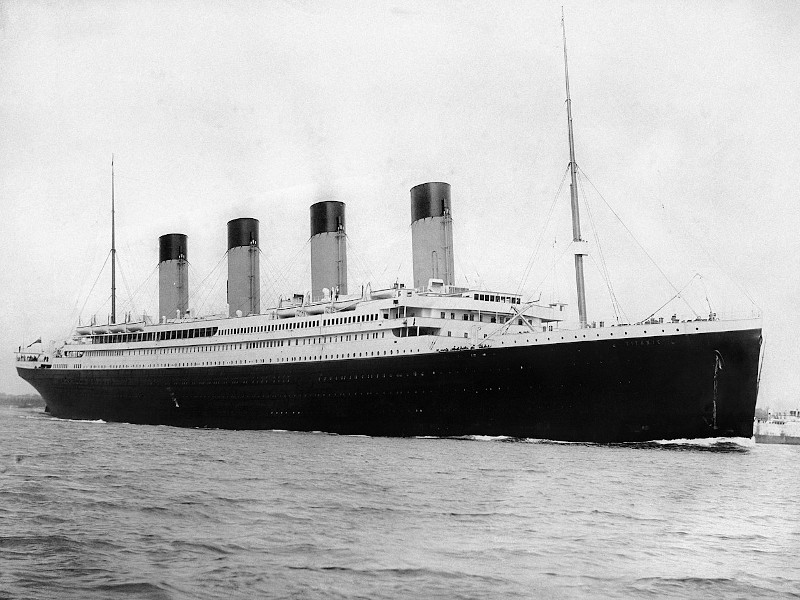04/10/1912 AD departed
Titanic departs from Southampton, and then stops at Cherbourg, France. Her next stop was in Queenstown (now Cobh), Ireland, before heading west towards New York.
Titanic's passengers numbered approximately 1,317 people: 324 in First Class, 284 in Second Class, and 709 in Third Class. Of these, 869 (66%) were male and 447 (34%) female. There were 107 children aboard, the largest number of whom were in Third Class.
The ship was considerably under capacity on her maiden voyage, as she could accommodate 2,453 passengers—833 First Class, 614 Second Class, and 1,006 Third Class.
Usually, a high prestige vessel like Titanic could expect to be fully booked on its maiden voyage. However, a national coal strike in the UK had caused considerable disruption to shipping schedules in the spring of 1912, causing many crossings to be cancelled. Many would-be passengers chose to postpone their travel plans until the strike was over. The strike had finished a few days before Titanic sailed; however, that was too late to have much of an effect.
Titanic was able to sail on the scheduled date only because coal was transferred from other vessels which were tied up at Southampton, such as SS City of New York and RMS Oceanic, as well as coal Olympic had brought back from a previous voyage to New York, which had been stored at the White Star Dock.
Titanic had around 885 crew members on board for her maiden voyage. Like other vessels of her time, she did not have a permanent crew, and the vast majority of crew members were casual workers who only came aboard the ship a few hours before she sailed from Southampton. The process of signing up recruits had begun on 23 March and some had been sent to Belfast, where they served as a skeleton crew during Titanic's sea trials and passage to England at the start of April.
Captain Edward John Smith, the most senior of the White Star Line's captains, was transferred from Olympic to take command of Titanic. Henry Tingle Wilde also came across from Olympic to take the post of chief mate.
Although Titanic was primarily a passenger liner, she also carried a substantial amount of cargo. Her designation as a Royal Mail Ship (RMS) indicated that she carried mail under contract with the Royal Mail (and also for the United States Post Office Department). For the storage of letters, parcels and specie (bullion, coins and other valuables), 26,800 cubic feet (760 m3) of space in her holds was allocated. The Sea Post Office on G Deck was manned by five postal clerks; three Americans and two Britons, who worked 13 hours a day, seven days a week sorting up to 60,000 items daily.
The ship's passengers brought with them a huge amount of baggage; another 19,455 cubic feet (550.9 m3) was taken up by first- and second-class baggage. In addition, there was a considerable quantity of regular cargo, ranging from furniture to foodstuffs, and a 1912 Renault Type CE Coupe de Ville motor car. Despite later myths, the cargo on Titanic's maiden voyage was fairly mundane; there was no gold, exotic minerals or diamonds.











